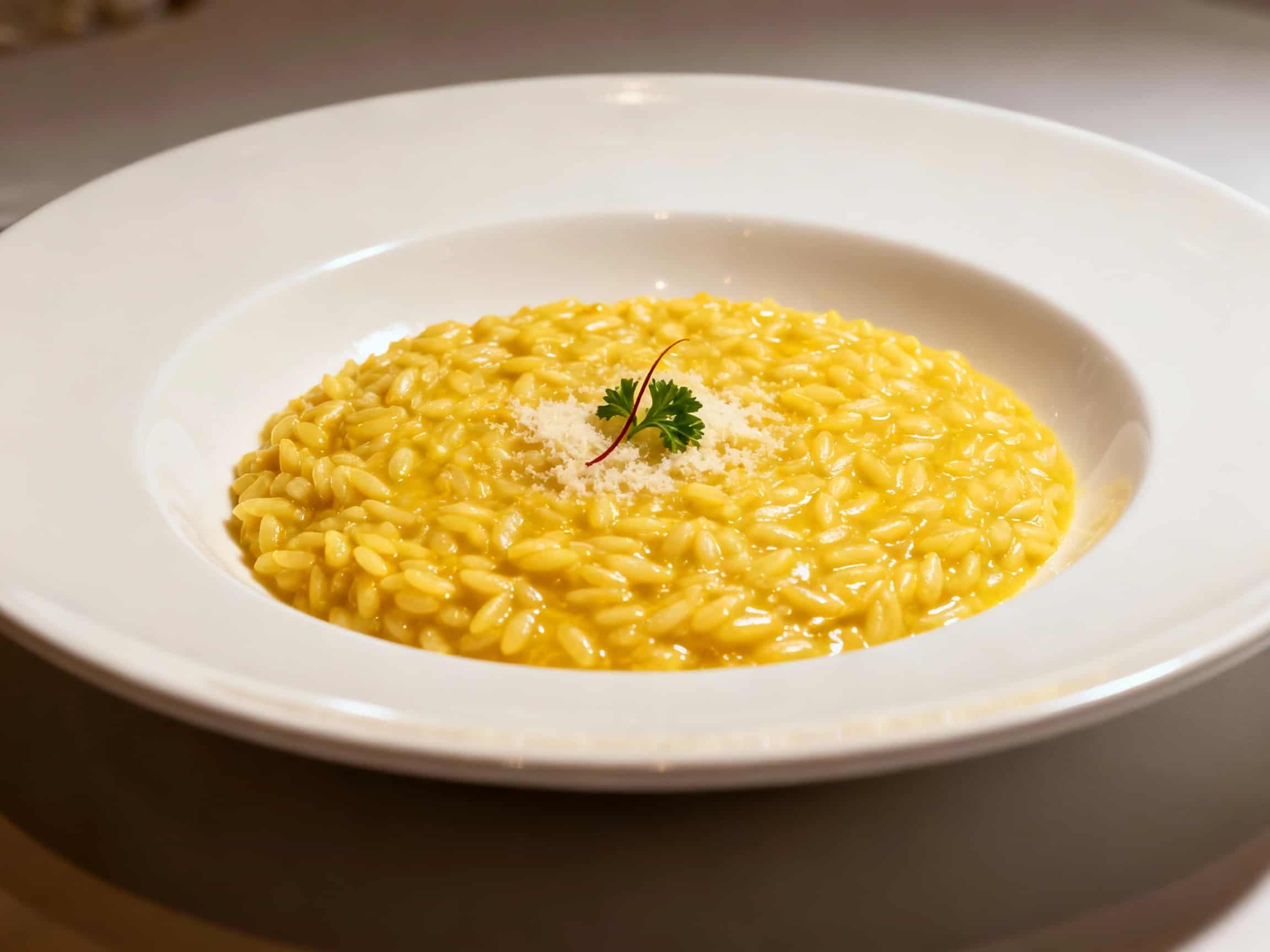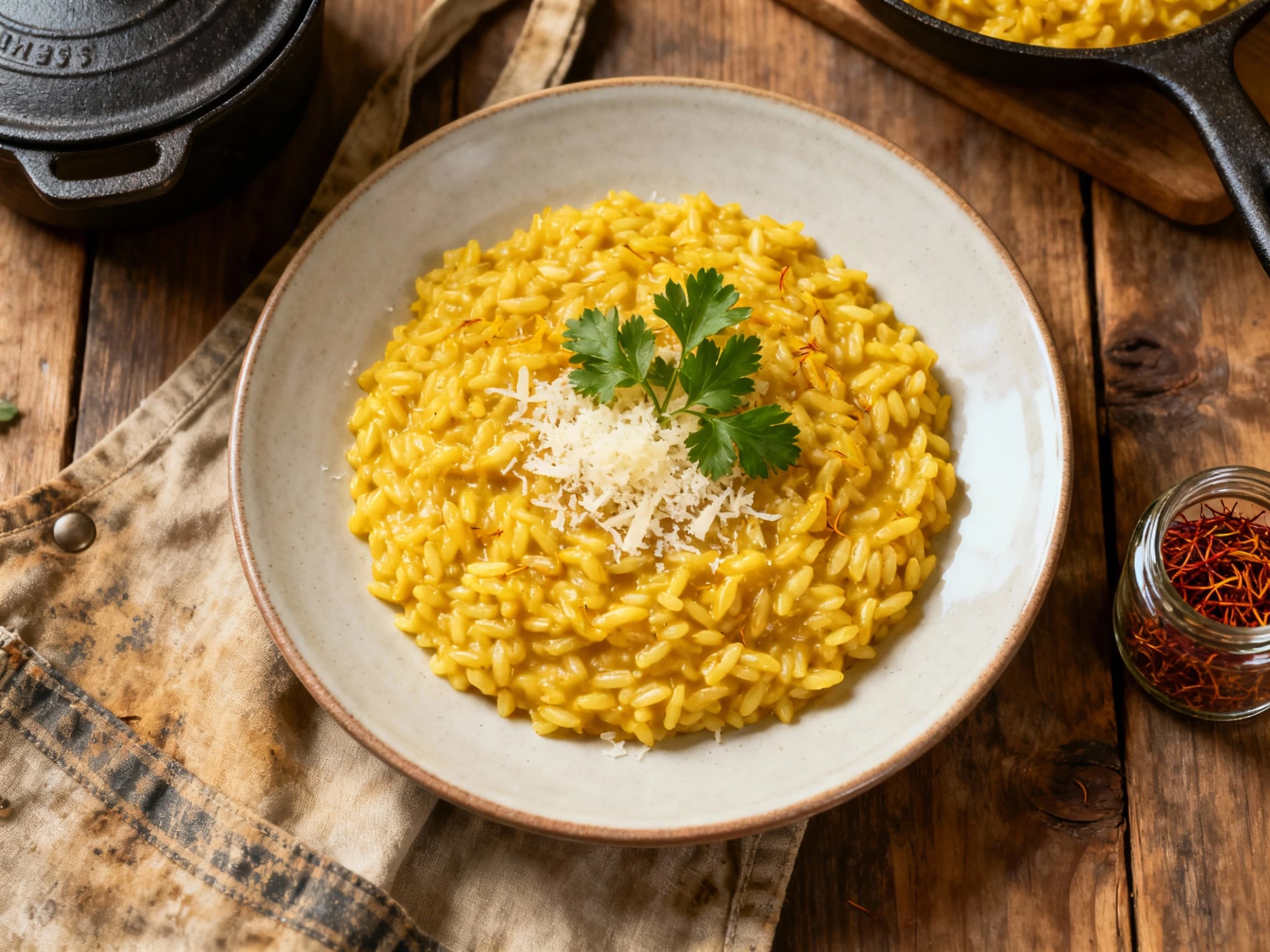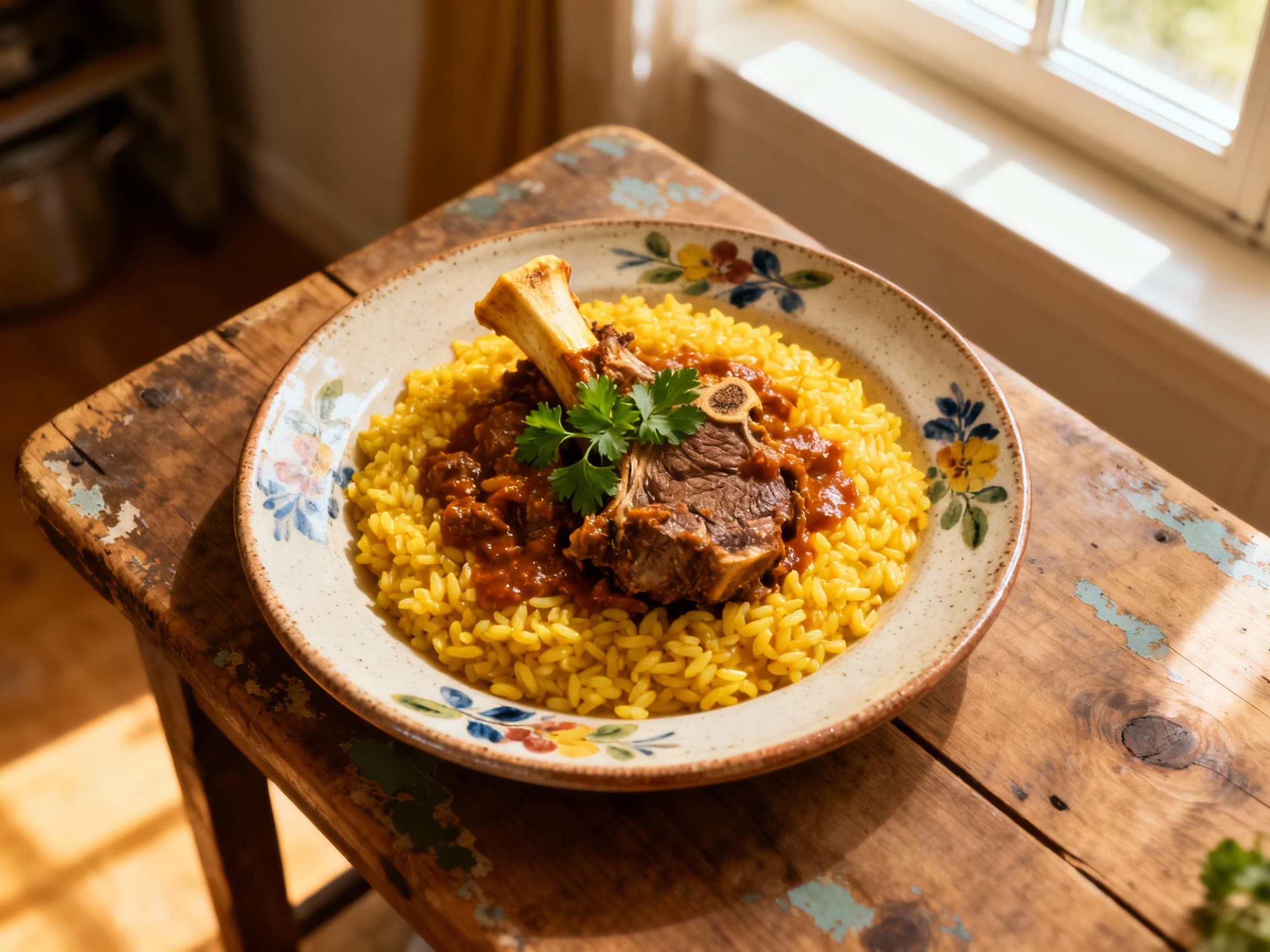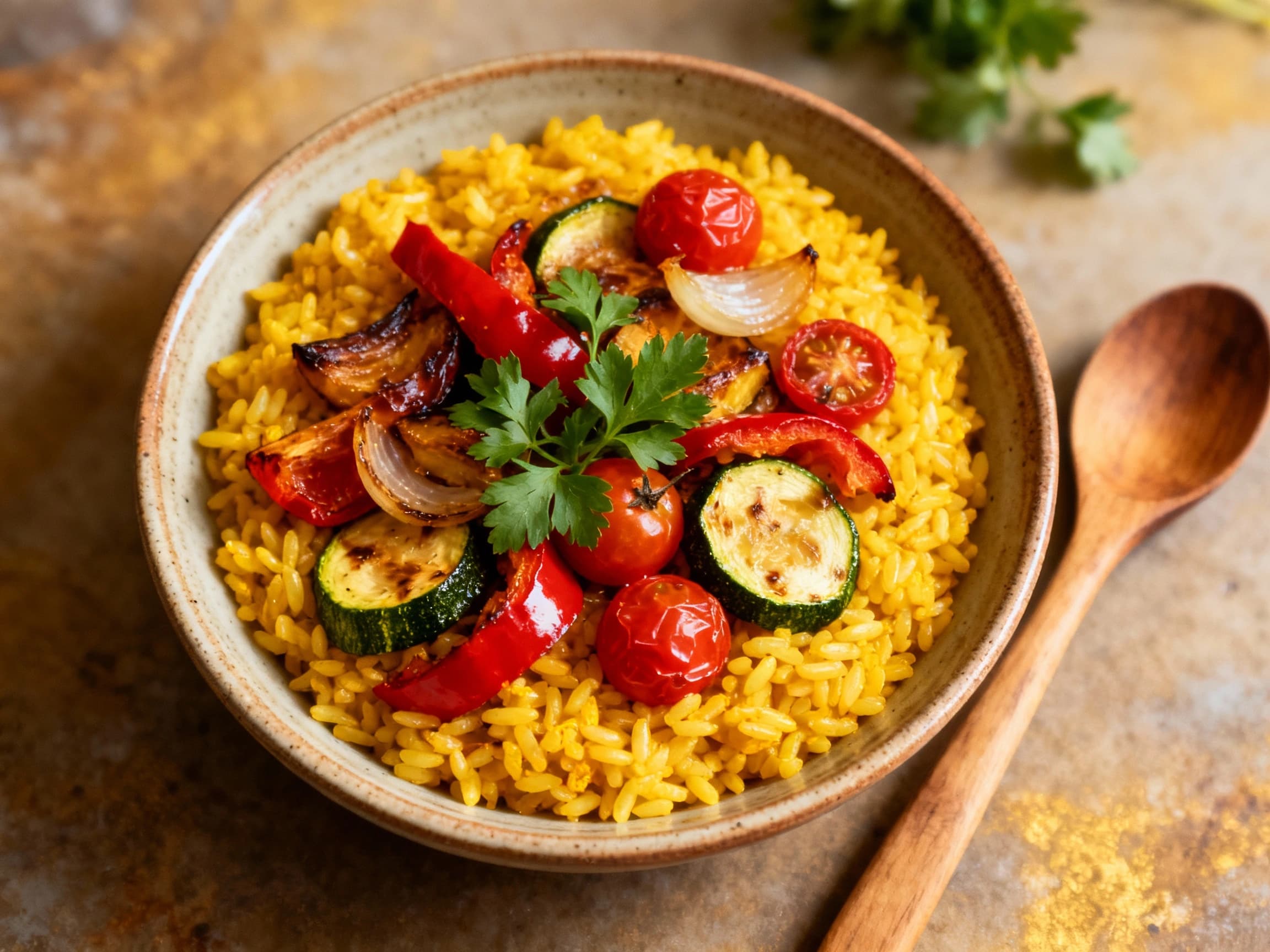
Risotto alla Milanese
Risotto alla Milanese
- Country
- Italy
- Region
- Lombardy
- Recipes
- 3 Recipes
Dish information
Risotto alla Milanese is a luminous culinary emblem of Lombardy, a dish whose golden hue is as iconic as its rich flavor. Its story, entwined with Milanese history, is often romantically linked to the construction of the Milan Cathedral. The enduring legend points to a Flemish glassmaker named Valerius of Flanders, who, in 1574, was coloring stained glass with saffron. His apprentice, known for his culinary prowess, allegedly added saffron to a wedding risotto as a joke, accidentally creating a masterpiece. While the tale is charming, saffron was a common and prized spice in medieval European cuisine, particularly in Lombardy, often used for its coloring properties in various dishes to signify wealth and importance. The dish’s true evolution reflects Milan's agricultural landscape and the availability of premium rice varieties like Carnaroli and Arborio, which are crucial for the risotto's characteristic creaminess, achieved through careful stirring and gradual addition of broth. The traditional inclusion of beef marrow (midollo) further distinguishes Risotto alla Milanese, imparting an umami depth and velvety texture that is unparalleled. This dish is not just a first course; it often serves as a luxurious accompaniment to Ossobuco, forming a harmonious pairing that epitomizes Milanese haute cuisine. Over the centuries, master cooks and culinary writers like Pellegrino Artusi have meticulously documented and refined its preparation, ensuring its legacy as a cornerstone of Italian gastronomic heritage, celebrated for its delicate balance of flavors, vibrant appearance, and comforting richness.
Timeline
Legend places the mythical origin of saffron-infused risotto at a wedding feast in Milan during the Duomo's construction.
A recipe believed to be an early version of Risotto alla Milanese appears in a cookbook by Felice Luraschi.
Giovanni Vialardi, a chef for the House of Savoy, includes a recipe for "risotto giallo" (yellow risotto) in his cookbook.
Pellegrino Artusi publishes a recipe for "Riso alla Milanese" in his influential book, solidifying its place in Italian culinary canons.


